When Sir Alex Ferguson retired in 2013, Manchester United sat atop the English Premier League having added their 13th Premier League title to the trophy cabinet. Ferguson had guided United to their 20th league title overall and had stuck to his vow to ‘knock Liverpool off their perch’.
Seven years later and United have had more managers (five including Ryan Giggs’ interim spell) than trophies (four). Their fall from the heights of English football is in stark contrast to Liverpool’s surge to the top, with the Merseyside club now being crowned English champions to add to their title of European and World champions.
Liverpool’s impressive recruitment has been at the core of their rise and in the four-and-a-half years that Jürgen Klopp has been at Anfield, the club’s net spend has been just €-119.53m, one of the lowest in the league. United, on the other hand, have a massive net spend of €-538.75m, second only to their neighbours Manchester City.
It is this gap that we will be looking into in this data analysis. Our analysis will look into the statistics of Manchester United’s recruitment over the last five years as well as compare the data of their current players in order to identify the weaker positions in the current squad. Our data analysis should provide a complete picture of United’s recruitment strategy and highlight the areas in their squad that Ole Gunnar Solskjær will need to address.
Without further ado, let us dive right in.
Recruitment strategy over the last five years
We will be looking at the average age of the players they sign, the leagues from where these players were signed from and also the total sum spent on those players per season. We will also see how many players signed in each season are still at the club in order to give us a rough idea of how good these signings were.
We will first look at a rough summary of their signings during this period. It should be noted that players returning from loan are not considered signings but those promoted from the youth to the first team will be counted in the data.
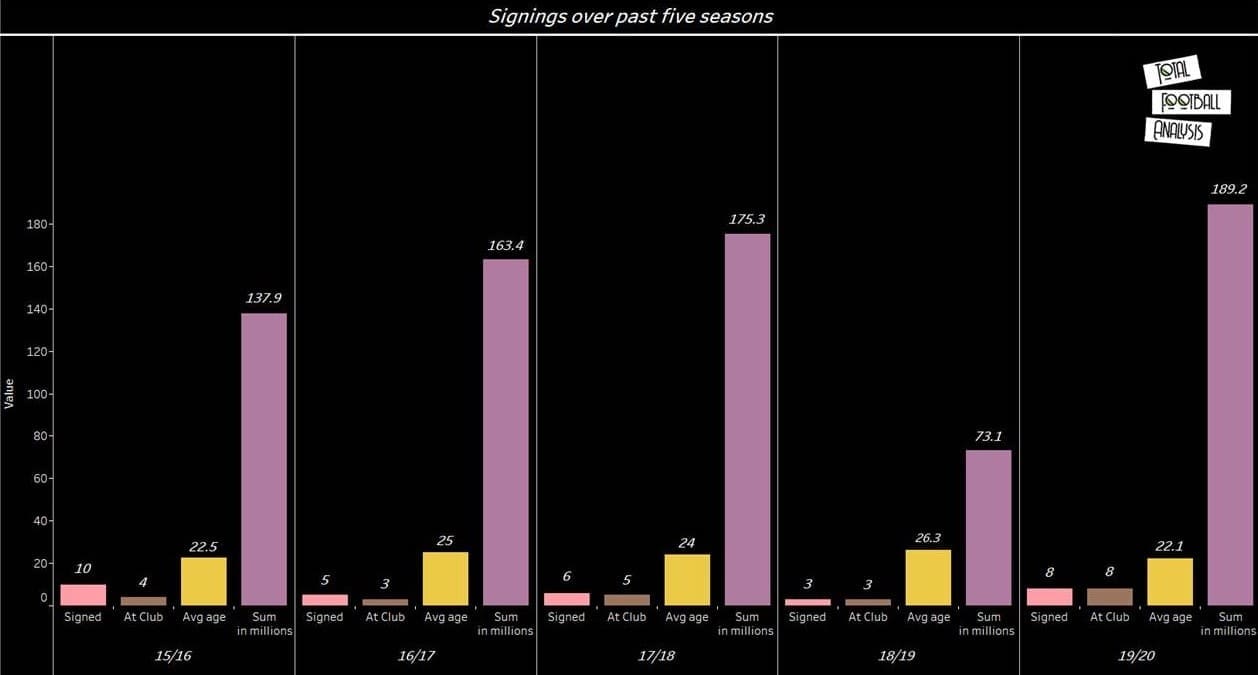
As we can see from the statistics, Manchester United’s spending over the past five seasons has increased exponentially barring the 2018/19 season. The data also shows a slight increase in the average age of the signings before dropping in the recent season.
However, it is clear that the Red Devils prefer to sign younger players and players just entering their peak as compared to experienced players. In fact, including Odion Ighalo who is on loan at the club currently, United have signed just four players aged 30 or above.
We can also see that less than half of those signed before the 2017/18 season are still at the club. Players like Morgan Schneiderlin, Memphis Depay and Matteo Darmian who were tipped to succeed at Old Trafford have since been sold after largely unimpressive performances.
This may show a flaw in United’s recruitment strategy as while they have signed promising players, they have not been able to fit into the manager’s playing style. On the flip side, however, players such as Anthony Martial and Paul Pogba are still a crucial part of the team although they have been slightly inconsistent in performances.
Current manager Solskjær has also spent heavily this season, signing players such as Aaron Wan-Bisakka, Harry Maguire and Bruno Fernandes, all in excess of €50 million. This has seen the club spend the highest amount on transfers over the past five seasons and while the signings have made a positive impact since joining, it remains to be seen if the team can regularly deliver consistent performances.
Next, we shall see where United have signed their players from.
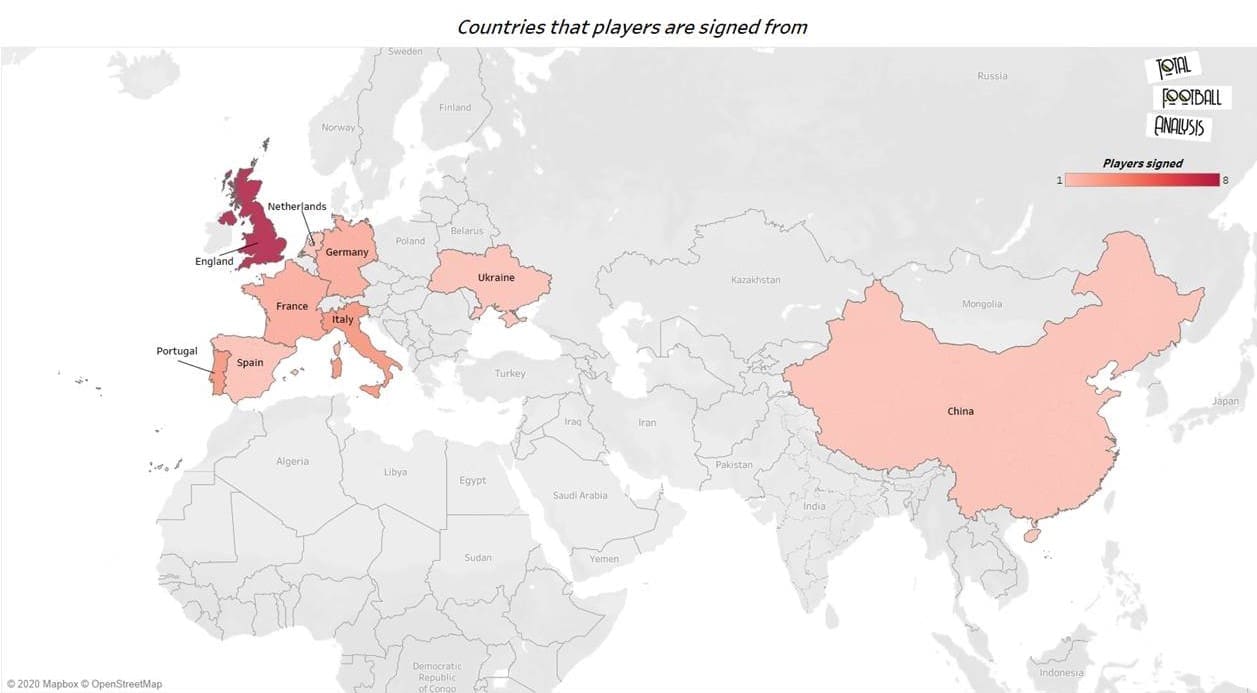
Majority of Manchester United’s signings have been from England and usually from Premier League clubs. In fact, apart from the signing of Lee Grant from Stoke City and Daniel James from Swansea City, all the signings within England have been from Premier League teams showing that the club prefers to sign players who already have experience playing in the top flight of English football.
After England, Italy and Portugal rank second with three players each signing from the leagues there. The Red Devils have signed two players each from France and Germany and one player each from Netherlands, Spain and Ukraine over the period.
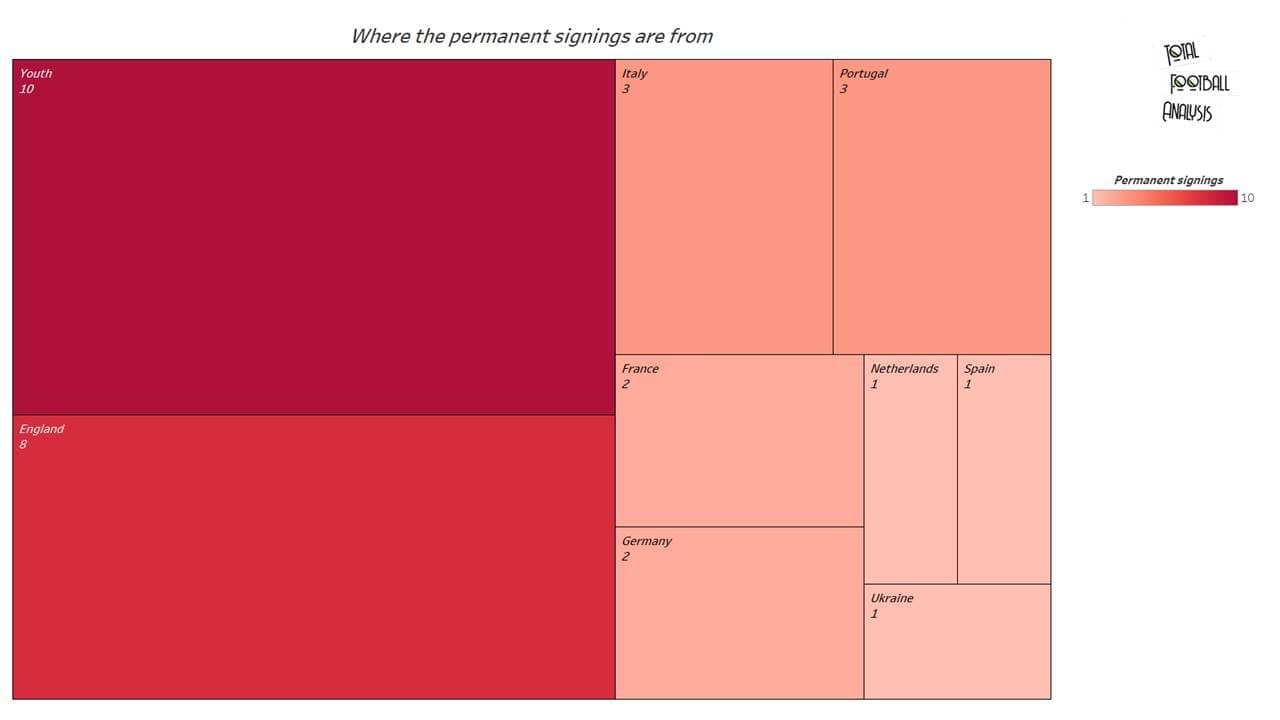
However, as mentioned earlier, players promoted from the youth academy will also be counted as signings. When this is taken into consideration, the data shows that 10 out of the 31 signings made during this period have been from the youth academy. Players such as Marcus Rashford, Scott McTominay and Mason Greenwood have caught the eye since being promoted from the academy and are already an important part of the team.
Manchester United’s youth academy has produced some famous names and the statistics show that a player from their academy has featured in the matchday squad for over 4000 games in a row, the record dating back to 1937. The club’s faith in their academy could be a reason as to why they do not sign players who have not otherwise played in the Premier League. They may prefer to mix some experience with their youth as opposed to fielding a team with little experience of the Premier League.
In the next part of our data analysis, we will look at the current squad of Manchester United and compare their statistics with the league average as well.
Manchester United’s squad and position based comparison
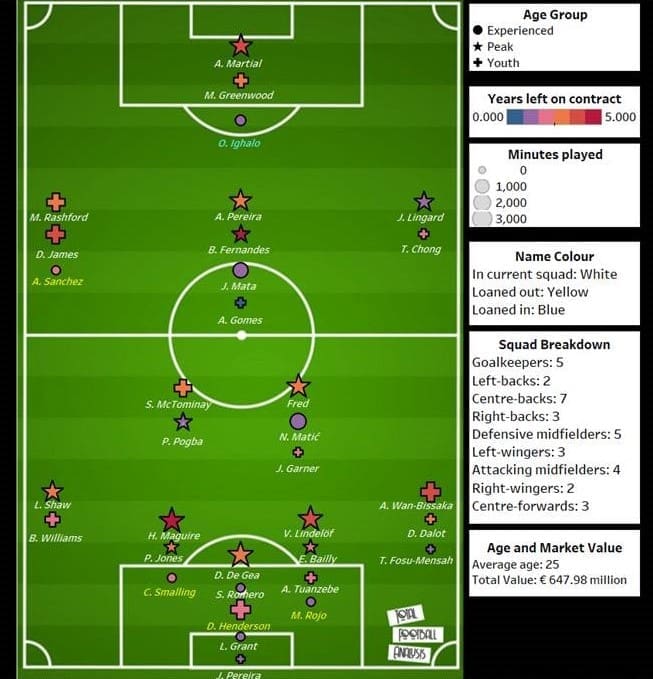
The breakdown of the Manchester United squad is shown above. The players have been arranged according to the team’s most used 4-2-3-1 formation. Players aged 30 and above are classified as experienced, those aged 23 and below are classified as youth and the players aged in the range from 24 to 29 are said to be in their peak.
We can immediately see that United have at least one replacement in every position and have a good number of centre-backs, goalkeepers, defensive and attacking midfielders in the squad. However, the Red Devils only have two players each at right-wing and left-back. An injury to one of these players could make it tough for the other considering that the club plays in European competitions and could play on weekdays in addition to weekends as well.
The average age of the squad is about 25 and this shows that they have more youth players and players in their peak as compared to older players. Looking at United’s starting squad as well, majority of the players are in their peak and the remaining are youth players. This shows that the Manchester United starting squad is not in any need of replacing from an age point of view and it is always a good sign for a club to be having younger players.
The data also shows that the Red Devils have four players currently loaned out and one player loaned in. It is interesting to see that barring goalkeeper Dean Henderson, the players loaned in and out are classified as experienced.
Following this, we will compare the statistics of the players in each position to that of the league average in order to identify weaker positions. The data used consists of position-specific statistics which have been compared to the league statistics for the same fields and the difference has been cumulated to give us a final relative value. The data has been taken only for players who have played at least 500 minutes (when the stats were taken) in the Premier League this season unless stated otherwise.
The statistics that we have used for comparing the positions in this data analysis will be given in specific in our player comparison section.
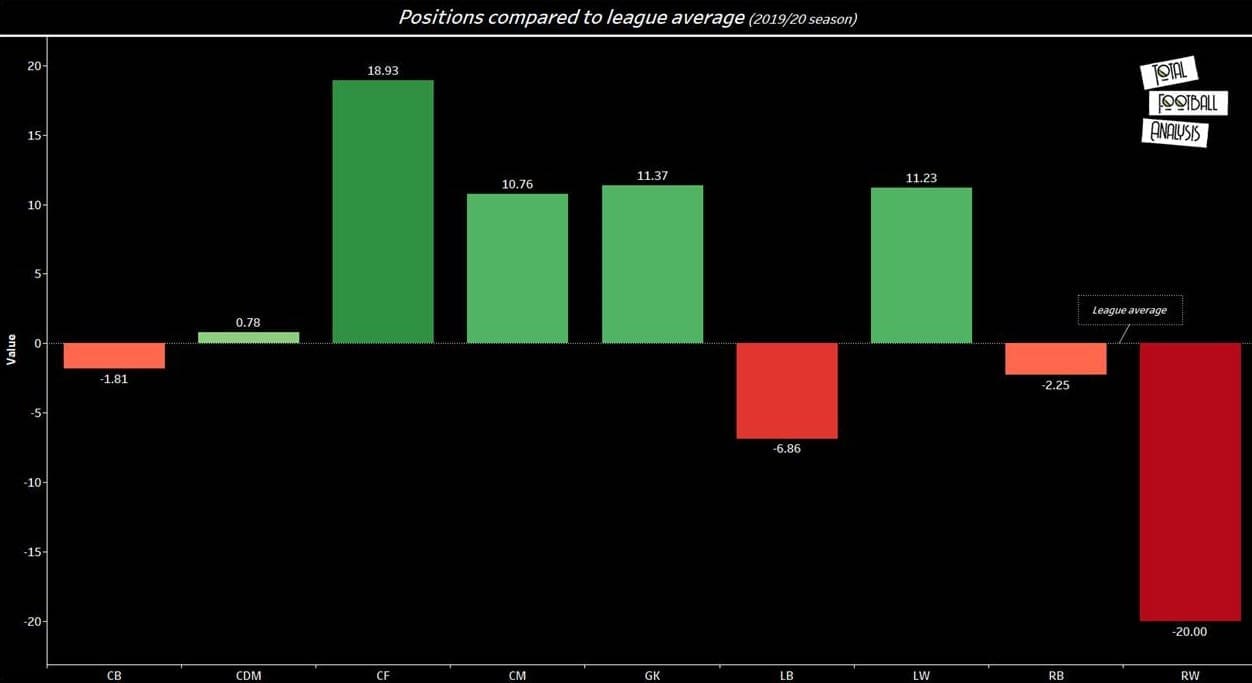
We can immediately see that the centre-forward position is the strongest while the right-wing position is the weakest in the squad. Barring the right-wing, Manchester United are relatively better in attack with their left-wingers and attacking midfielders ranking at least 10 points above league average.
Their defensive midfielders are just above the league average though the rest of the defensive positions have lower statistics. At centre-back and right-back, the margins are lesser but the left-back role lies about six points below the league average. The goalkeeper position has been excellent for the Red Devils with David de Gea considered as one of the best in the world. Henderson’s statistics have also been taken into account as although he has been on loan, he has played in the Premier League this season and impressed for Sheffield United.
In order to gain a better insight as to the figures shown above, we will look into the player-wise statistics of the squad across the various positions.
Player comparisons
Our player-wise comparison takes into account players who have played at least 500 minutes for the club in the Premier League alone. We have taken 10 statistics for comparison within each position except for the goalkeepers, where we have taken nine. All the statistics have been taken as of writing and could have changed before publishing as well.
This section of the analysis will flow from the defensive positions to the attacking positions in the squad.
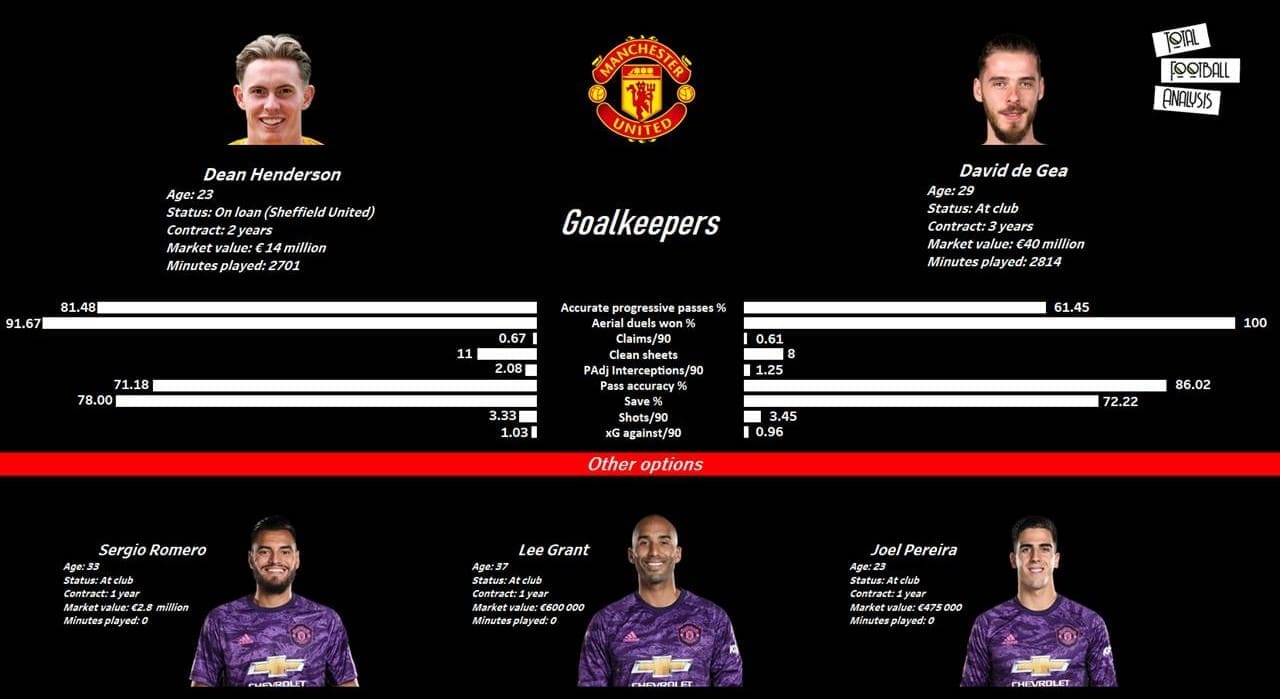
Looking at the goalkeepers, we can draw a comparison between De Gea and Henderson. The latter has spent this season on loan at Sheffield United and has formed a crucial part of Chris Wilder’s side. On the other hand, De Gea has looked a shadow of his former self this season and although his numbers are still impressive, more can be expected from the Spaniard.
The two have pretty even statistics apart from the progressive passes accuracy (Henderson’s 81.48% to De Gea’s 61.45%), possession-adjusted interceptions per 90 (Henderson’s 2.08 to De Gea’s 1.25) and pass accuracy (De Gea’s 86.02% to Henderson’s 71.18%).
Other options for Solskjær are Sergio Romero, Lee Grant and Joel Pereira. Romero has been United’s second choice this season but has mainly featured only in cup matches. His performances in the cup matches have been good and the Red Devils would be pleased to have a capable backup in the Argentinian. Grant has featured only twice for the club, excluding friendlies, but the experienced goalkeeper is certainly a good presence in the squad. Pereira has featured only once for the club, coming on as a substitute in a cup tie and has often been sent on loan for some playing time.
We will now move on to the defenders.
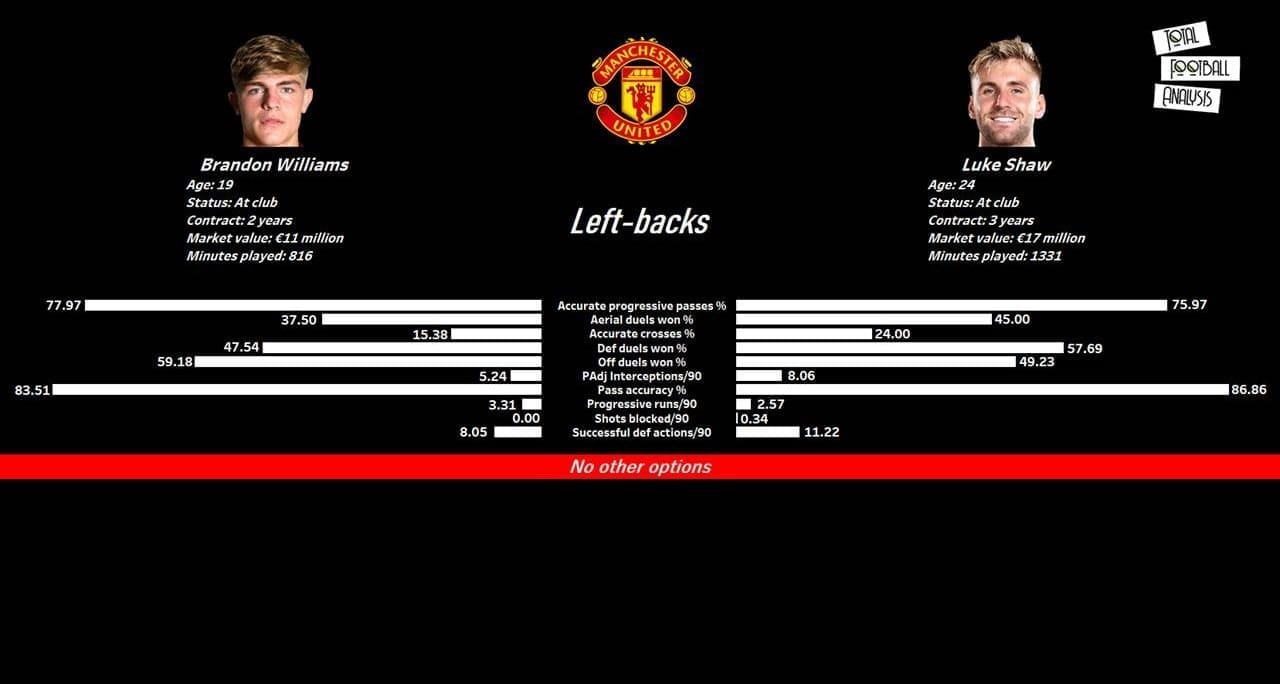
At left-back, Manchester United have two options in Luke Shaw and Brandon Williams. The latter is in his debut season and has already won the support of the Old Trafford faithful. However, this spot does appear to be a concern for the Red Devils as it ranks relatively lower than the league average.
Shaw has been the better of the two this season but Williams does have the edge in terms of accurate progressive passes (77.97%) and offensive duels won (59.18%). Although Shaw has finally looked to reach his potential, he has had his injury woes and Williams may not yet be ready to fill in the position permanently. Solskjær also finds himself short of options apart from these two and could definitely do with a backup in this position.
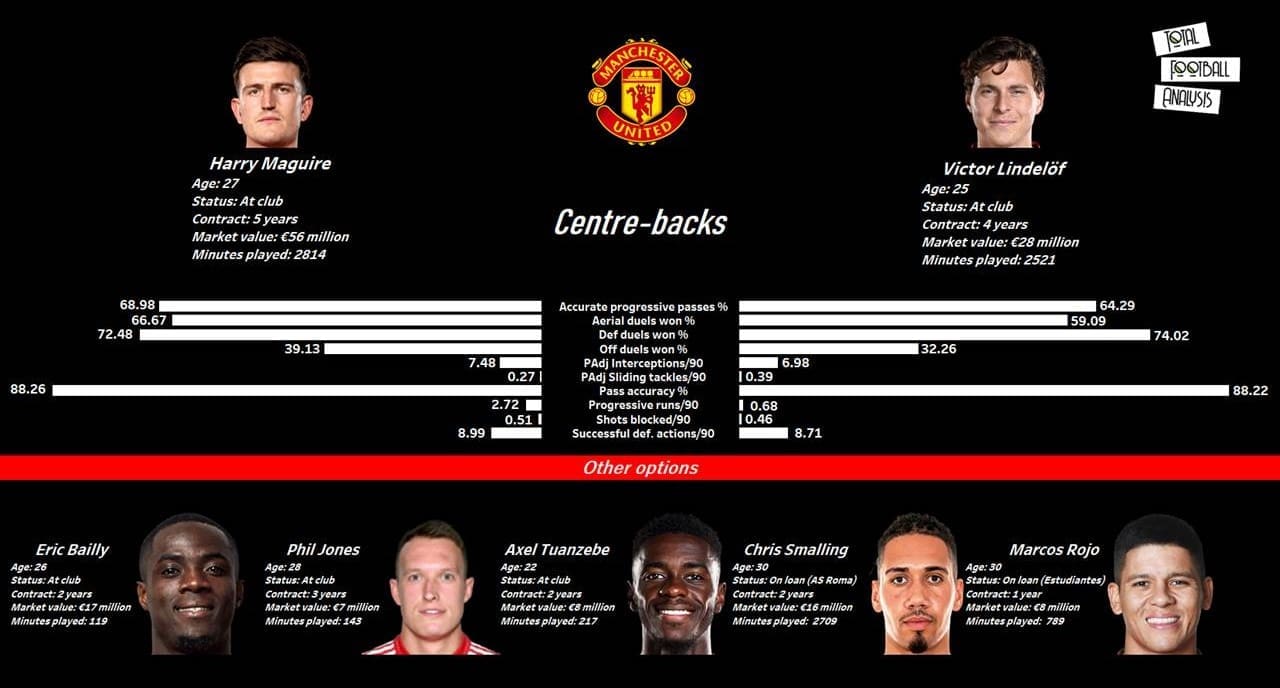
Looking at the centre-backs, summer signing Harry Maguire has made a huge impact and is already the club captain as well. The Englishman has been excellent and has provided a solution to United’s centre-back woes of the previous season. His aerial ability has served him well, winning two-thirds of his aerial duels and he has won 72.48% of his defensive duels, about six per cent higher than the league average. He is also adept with the ball at his feet and makes about 2.72 progressive runs per 90, one of the highest in the league.
Maguire has found a capable partner in Victor Lindelöf, who after struggling initially since signing from Benfica in 2017, has found his feet in the Premier League. The Swede has been impressive this season and has formed a formidable partnership with Maguire in defence. Lindelöf has won two per cent more of his defensive duels than his counterpart.
However, the two still find themselves below the league average overall due to their weaker statistics in other areas. They rank one per cent below the league average in terms of successful defensive actions per 90 and nearly 10 per cent in terms of offensive duels won. They have also made few possession-adjusted interceptions as compared to other centre-backs in the league.
Other options for the Red Devils include Eric Bailly, Phil Jones and Axel Tuanzebe. Bailly has had his problems with injuries and has not featured much for the club this season. He has shown flashes of brilliance though against teams such as Chelsea where he was confident defending and on the ball. Jones meanwhile has been a target for criticism of late. His error against Sheffield United earlier in the season cost the team a goal and he has not been used much this season either. Tuanzebe has shown a steady rise and although he has played well when given the chance, Solskjær seems to be using him more as a substitute and is keen on allowing him to develop further before playing him more often.
Chris Smalling and Marcos Rojo do not appear to be in Solskjær’s plans as well. They are both out on loan at Roma and Estudiantes respectively and there has been talk of Smalling sealing a permanent transfer as well. Rojo looked to be leaving the club earlier before his current loan move as well. However, United could do with another substitute centre-back and could possibly look to sell Jones as well.
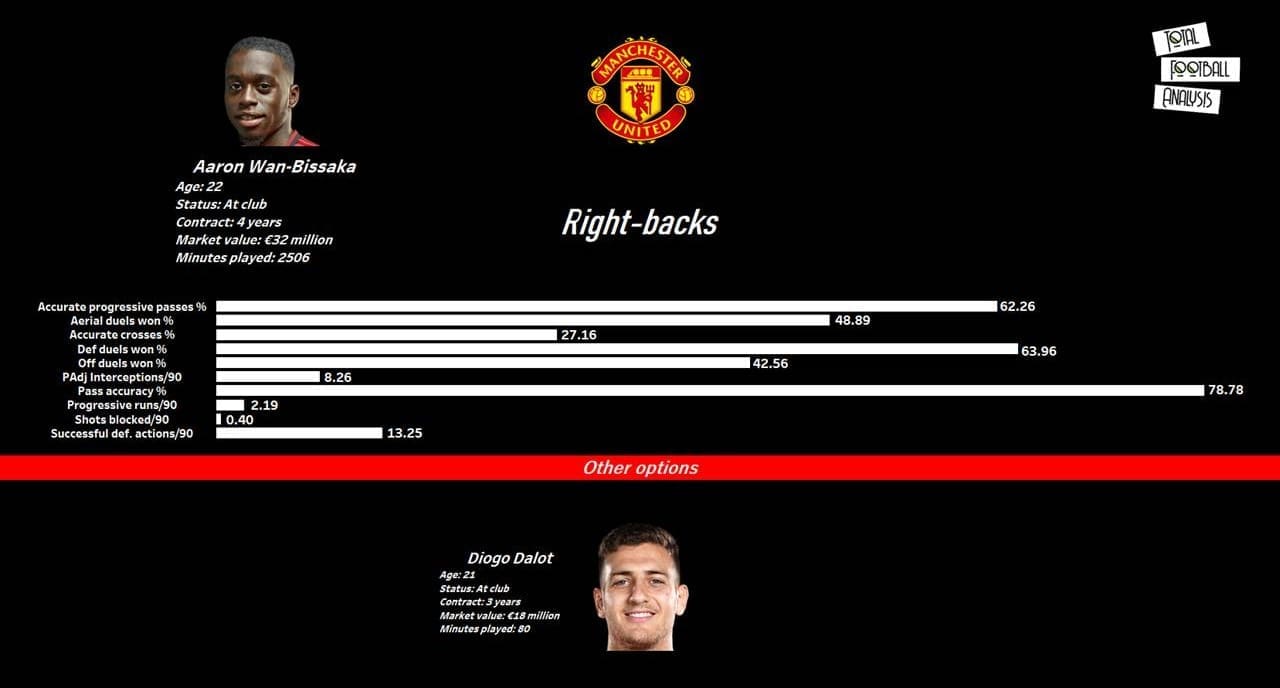
Manchester United have two promising right-backs in their squad in Aaron Wan-Bisakka and Diogo Dalot. The former has been stellar since his signing from Crystal Palace in the summer and has been hailed as one of the best one-on-one defenders in the world. Wan-Bisakka’s defending ability is unquestionable and he has a success rate of around five per cent more than the league average. He has not performed as well offensively, ranking lower than the league average in terms of offensive duels, accurate crosses and accurate progressive passes. This is the main reason why the right-back position ranks lower than the league average overall.
Dalot, on the other hand, has been better in attack but has only played 80 minutes this season owing to injuries. He has shown flashes of brilliance but unfortunately has not had a good run of matches in the team owing to his injuries. Luckily for Solskjær, Wan-Bisakka has been fit and has managed to play the majority of the matches. It would, however, be in the club’s best interest to have another backup in this position as well.
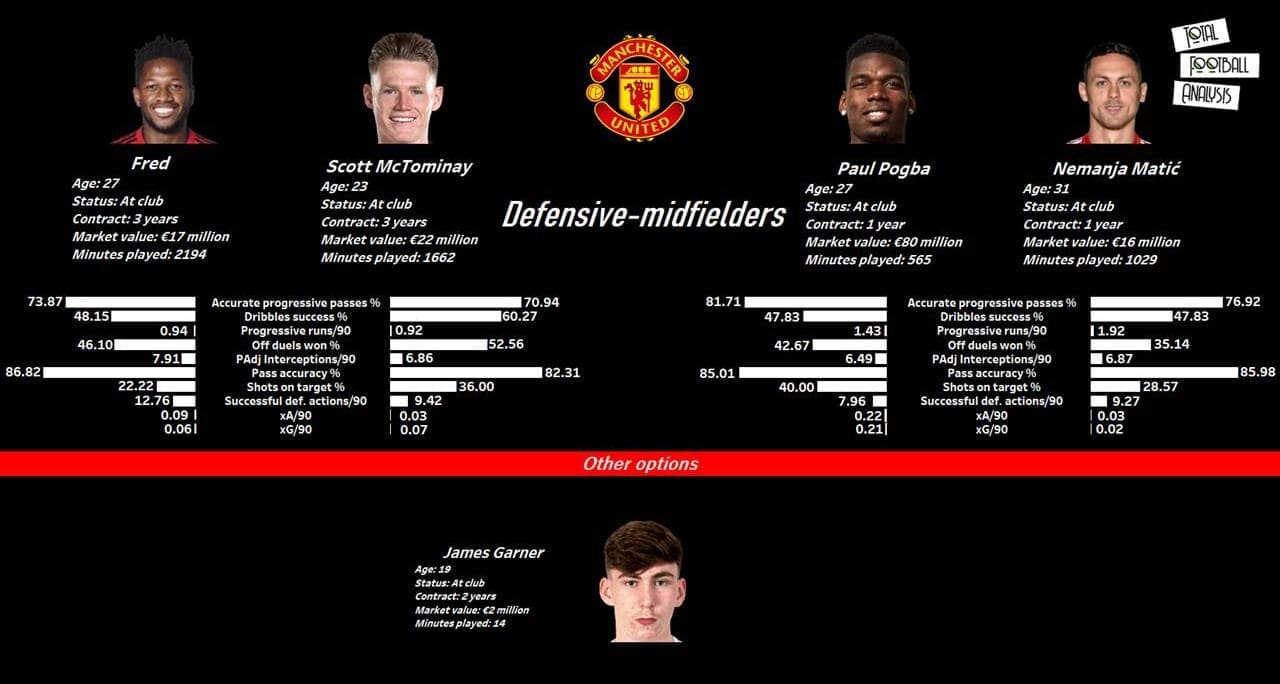
Manchester United have used a variety of combinations in the defensive-midfield position but they can safely say that this area is relatively well covered. Paul Pogba is one of the best midfielders in the world and although he is originally an attacking midfielder, he has operated as a deep-lying playmaker for the Red Devils. His injuries this season have limited his role in the squad but Fred and Scott McTominay have performed admirably in his absence.
The Brazilian has benefitted hugely from an increased run in the squad and has finally found his feet in the Premier League. McTominay, on the other hand, has proved his capability in the centre time and again and has already become a fan favourite. In Nemanja Matić, Manchester United have a Premier League winner with loads of experience and he has often played as a single pivot in midfield, dropping back to support the centre-backs. 19-year-old James Garner has also been awarded playing time in cup competitions but has only played 14 minutes in the Premier League. He has performed well when played and though this position is only slightly above the league average, it seems that United are finding their perfect combination and have this area taken care of.
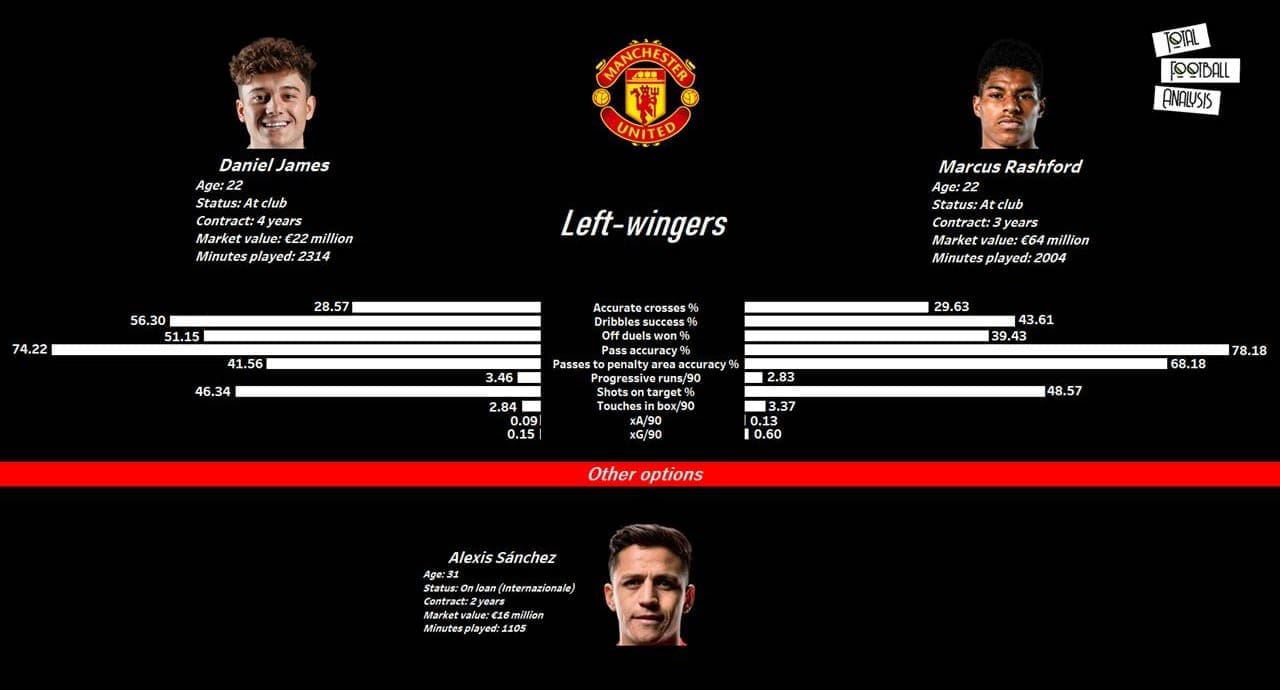
Moving on to the more forward positions, Manchester United have a very young and promising left-wing. Marcus Rashford has risen remarkably since his breakthrough season and this season he has taken it up a notch with an impressive scoring run. He is no doubt one of the top wingers in the league and is testament to the brilliance of United’s academy.
Daniel James was a less popular name when he first signed for United but his performances this season have surely been eye-catching. He has been an excellent signing for the Red Devils and has troubled defences with his pace and found himself a few goals and assists as well. However, the only other option for the team in this position is Alexis Sánchez, who is out on loan.
The Chilean’s move from Arsenal was celebrated by United fans but he just has not lived up to the hype. In 32 league games for the club, he scored just thrice and provided a mere six assists. He was rightly sent on loan but it remains to be seen if he will remain at United considering his huge wages. Should Sánchez be sold, we can expect Solskjær to sign another squad player to provide some cover for James and Rashford.
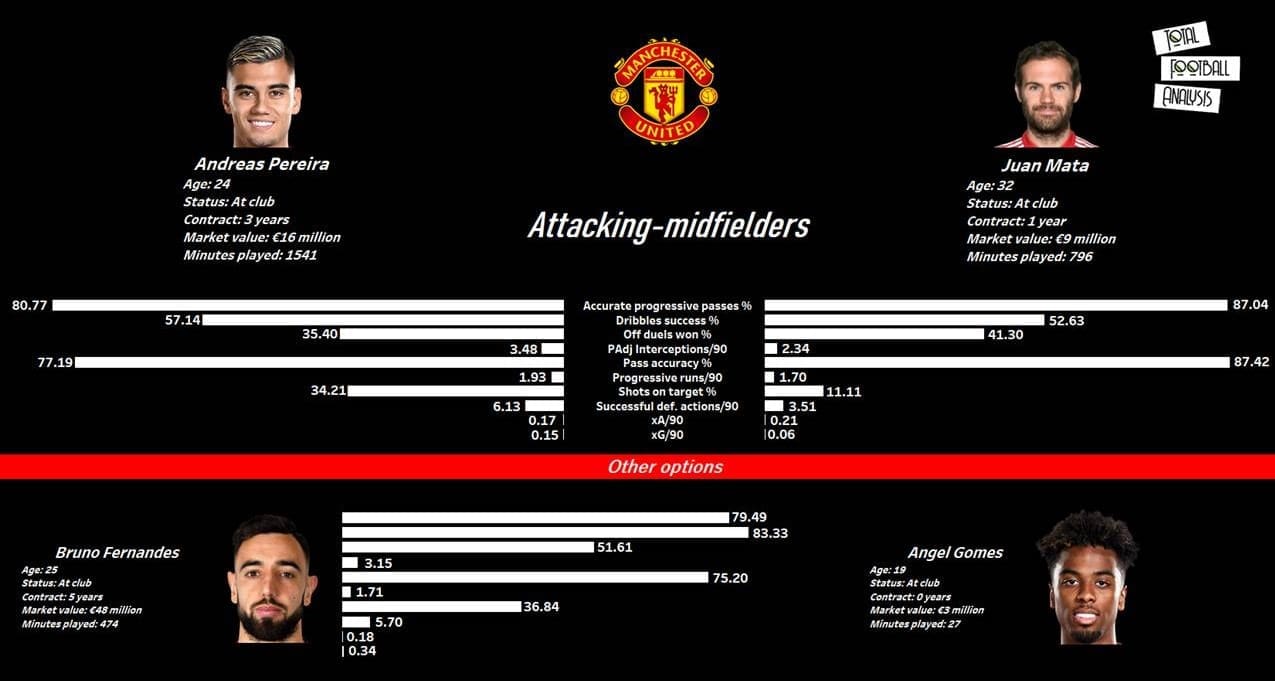
The attacking-midfielder role has seen a huge improvement since the winter signing of Bruno Fernandes. His role at the club has been so crucial that although he has not played 500 minutes, his statistics have still been included. Fernandes boasts an xG/90 of 0.34 which more than double the league average and has also won 51.61% of his offensive duels, nearly 10% more than the league average. His attacking threat has been immense and is a major reason as to why United rank higher than the league average in this position.
Andreas Pereira and Juan Mata have occupied this position before the arrival of Fernandes and they have largely been inconsistent. Pereira showed flashes of form but was not reliable every week while Mata has provided a lot of creativity but has certainly started dwindling with age. In fact, the pair rank lower than the league average apart from their progressive passing, runs and dribbling. This does not mean that they are not good backups though and they could serve as able replacements for Fernandes.
19-year-old Angel Gomes is also entering the final month of his contract and although he has been a hot prospect, he has not yet taken the league by storm as many had expected him to. Gomes is still young though and has performed well in the youth leagues so it would be a shock should he leave the club. Hence, as of now, the attacking-midfielder position seems covered for Manchester United.
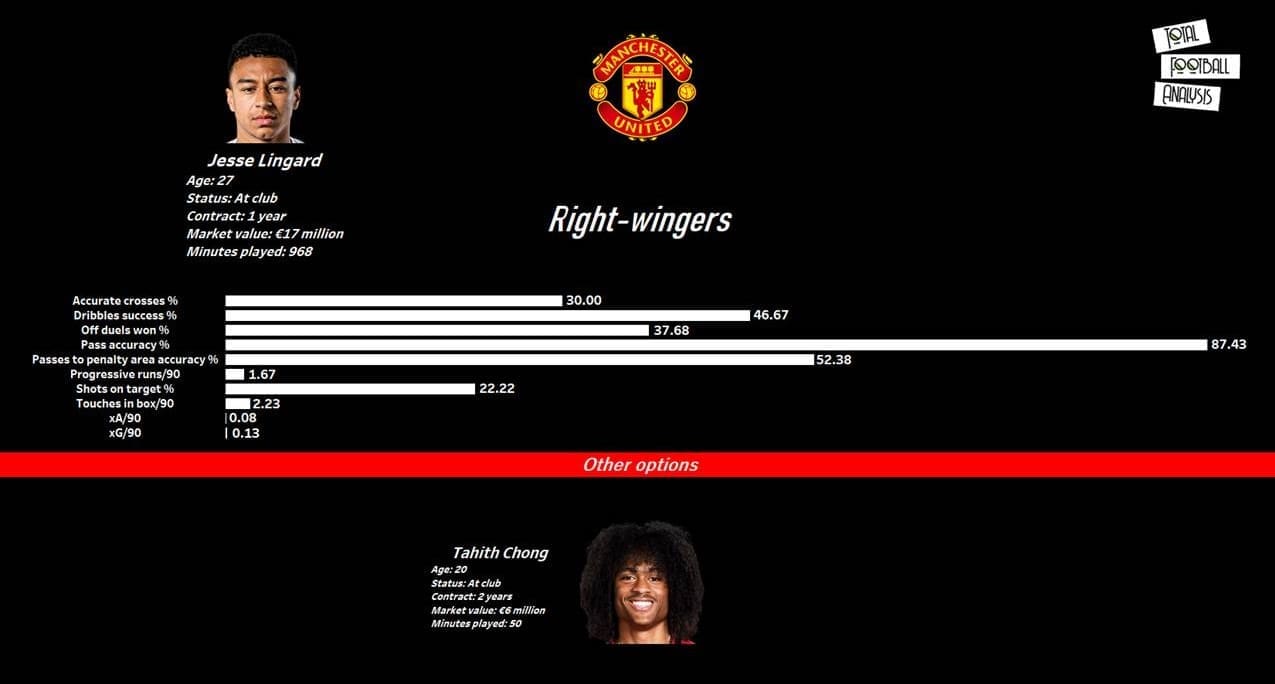
The right-wing has been United’s worst-performing spot this season. As the earlier data showed, the statistics for the club’s right-wingers was much lower than the league average. Jesse Lingard went the whole of 2019 without a single Premier League goal for the club and the immense potential that he showed early in his career has seemingly faded away.
Reaching the end of his peak age as well, he has severely underperformed for the Red Devils this season. In fact, Lingard’s pass accuracy is the only statistic where he ranks higher than the league average. The fact that he is also a natural attacking-midfielder who has been used on the right-wing raises eyebrows as to United’s capability in this position. Daniel James has often had to play here as well due to a lack of options for Solskjær.
The only other option that United do have currently is 20-year-old Tahith Chong. He has played just 50 minutes in the league this season and though he has been promising, does not seem ready to claim a permanent spot in the team. Manchester United have long been linked with Jadon Sancho and now would be a good time to sign the Borussia Dortmund star considering the club’s gaping hole down the right-wing.
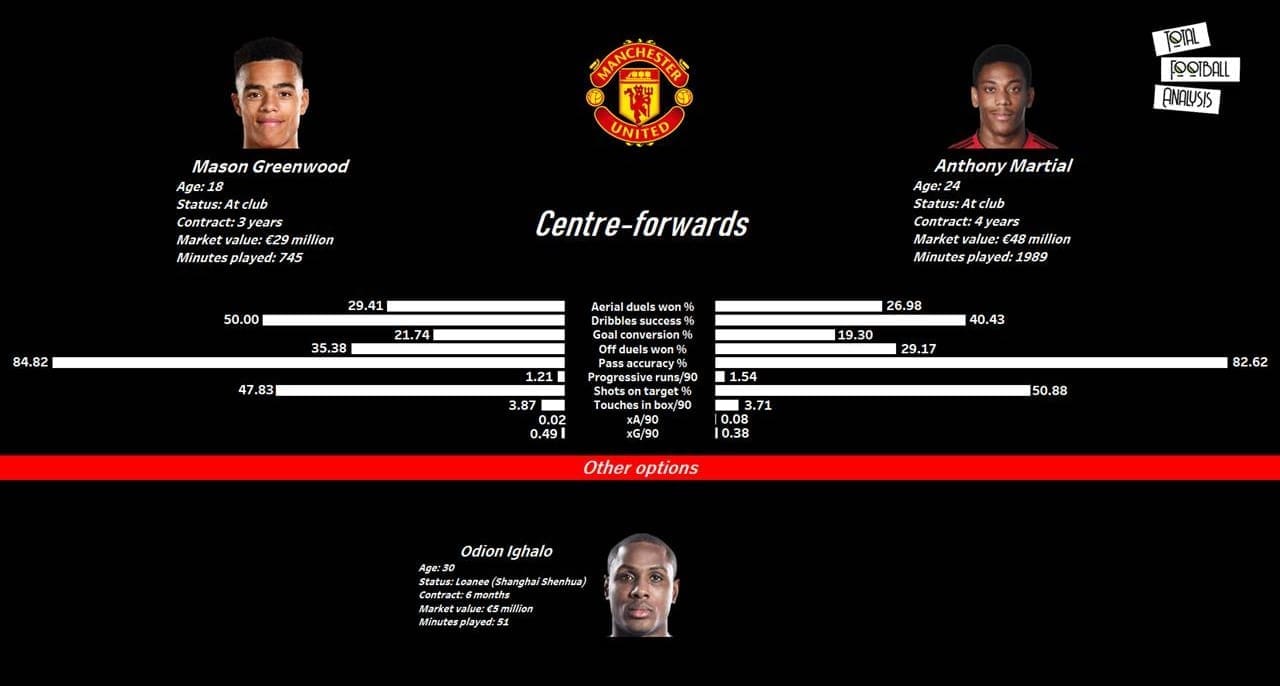
The final position of our analysis is the centre-forward role. Manchester United’s best performing role has seen a huge improvement this season, with Anthony Martial coming to form. The first Manchester United player to score a hat-trick since Robin van Persie in 2013, Martial has answered all his critics with clinical performances in front of goal. His goal conversion rate is about five per cent higher than the league average while his shot on target percentage is about seven per cent higher.
Martial’s impressive run this season has also coincided with Mason Greenwood’s rise to prominence. The 18-year-old has made a name for himself with performances well beyond his years and has been a bright spark in the United squad. His impressive xG/90 of 0.49 and goal conversion rate of 21.74% has seen Solskjær offer him more playing time and he has also been called upon to play down the right-wing as well. The youngster has already taken his first full season by storm and United are confident that they have a star in their ranks.
The other alternative is on-loan forward Odion Ighalo. The Nigerian’s signing caught many by surprise but he has not disappointed this season and has in fact performed excellently in the cup competitions. However, he has played only 51 minutes in the league this season and hence his statistics do not feature here. His good performances have seen the club extend his loan contract and having had Premier League experience with Watford earlier, Ighalo has certainly become a valuable addition to the squad. Should he leave when his contract expires though, Solskjær may look for another striker capable of playing the odd game much like Ighalo at the moment.
Conclusion
Through this data analysis, we have seen the recruitment strategy of Manchester United and have also had an analysis of the position-wise statistics of the players. We have seen the type of players that the club prefers to recruit and also from where these players have been signed. Based on the data and statistics, we have also identified the stronger and weaker areas in the current squad and have offered some insight into what the club could do to strengthen their team.
The right-wing position is a huge problem for Solskjær while Dean Henderson has certainly given him something to think about regarding the number one goalkeeper spot. Solskjær would also be hoping to fully reap the benefits of his improved backline and see them feature above the league average next season.
While there are still changes to be made, the signs are promising for the club and show that they are moving in the right direction. One thing is certain though, if Manchester United are to fight for the Premier League title in the near future, they would have to work on their squad and recruitment and find the right formula sooner rather than later.


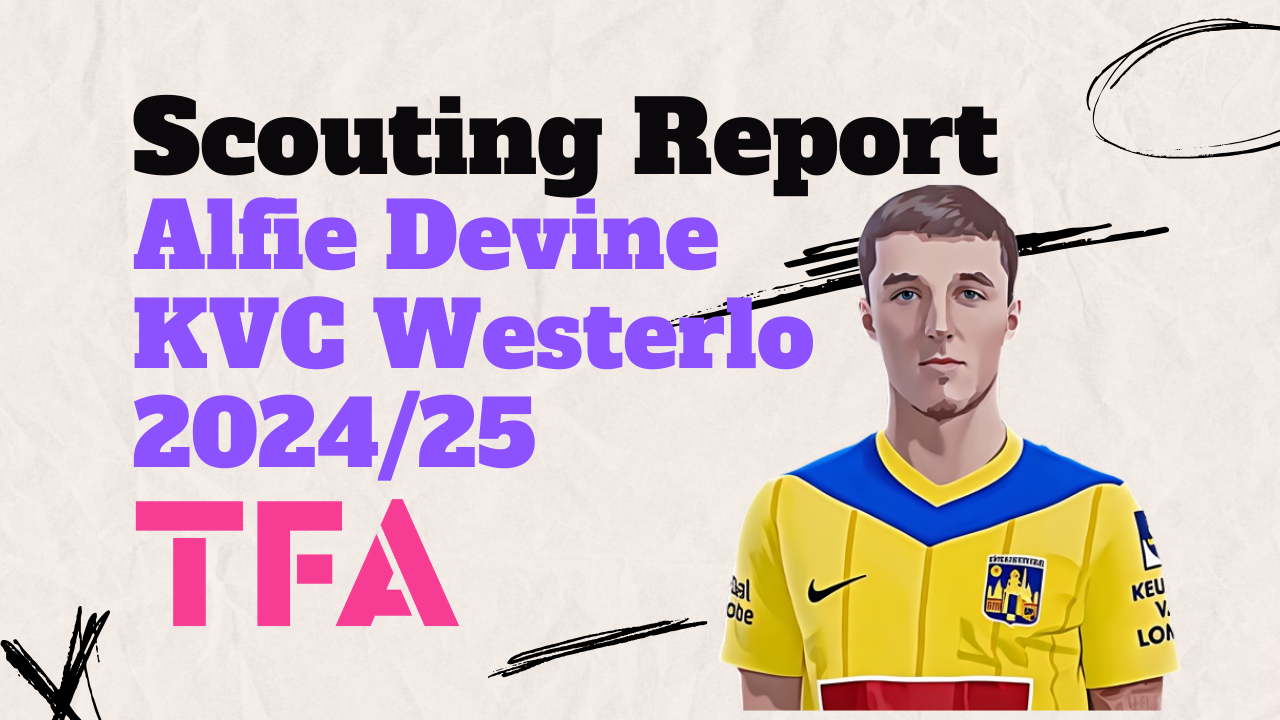
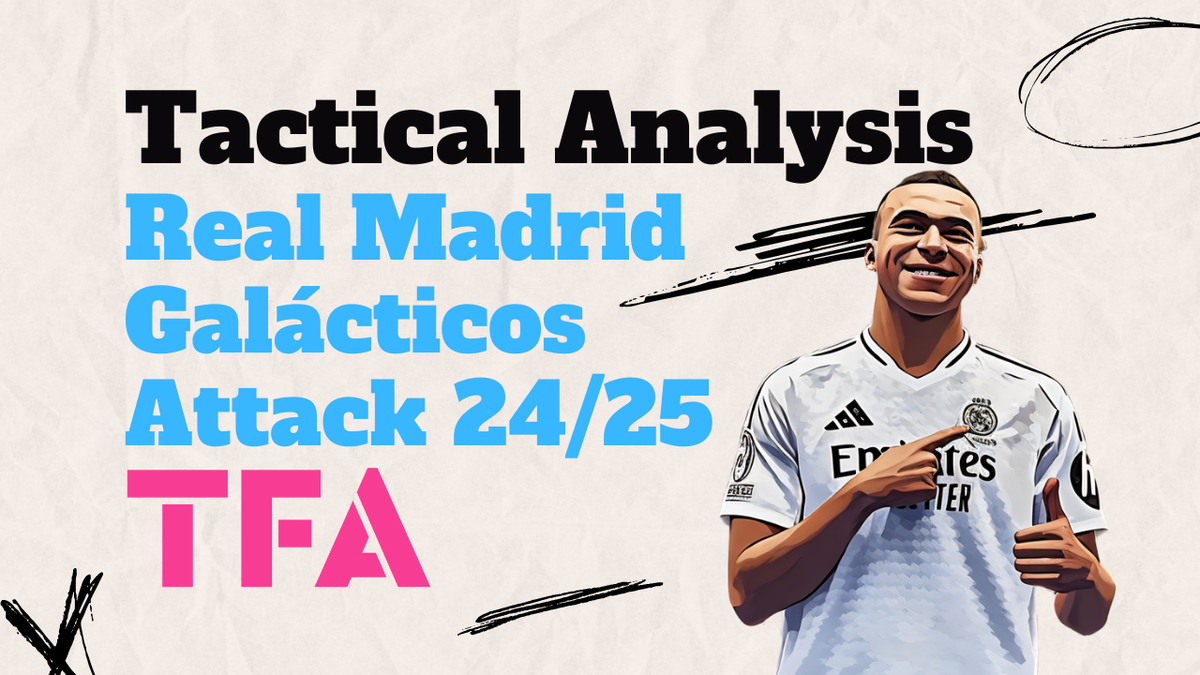
Comments